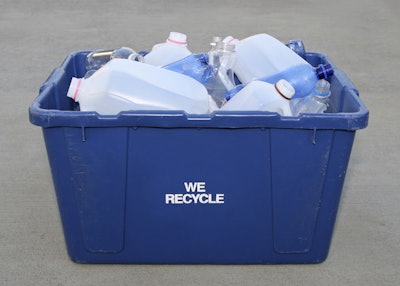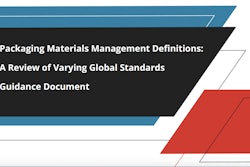
Plastic bottle recycling declined slightly in 2017, slipping 3.6% to 2.8 billion lb, according to figures released jointly today by the Association of Plastic Recyclers (APR) and the American Chemistry Council (ACC). The The 2017 United States National Postconsumer Plastic Bottle Recycling Report indicates the overall recycling rate for plastic bottles for the year was 29.3%, down 0.4% from 29.7% in 2016. The five-year CAGR for plastic bottle recycling was 0.1%.
Factors that contributed to the industry challenges included changing export markets and a 3.6% drop in material collected for recycling. Ongoing increases in single-stream collection also led to increased contamination of recyclables in the near term. In addition, growth in the use of plastic in bottles was offset by continuing progress in lightweighting and increased use of concentrates with smaller, lighter bottles.
In 2017, PET (#1) bottles collected for recycling decreased by 27 million lb. The collection of high-density polyethylene (#2) bottles, which include bottles for milk, household cleaners, and detergents, fell by 70.3 million lb (6.3%) to just over 1.0 billion lb for the year. The recycling rate for HDPE bottles slipped from 33.4% to 31.1%.
Exports of HDPE bottles fell nearly 28% from 193 million lb to 140 million lb, or 13.4% of total HDPE bottles collected in 2017. The processing of recycled HDPE sourced domestically and imported fell by 31 million lb in 2017.
“Plastic bottle recycling is proving to be resilient in the face of short-term challenges,” says Steve Alexander, President of APR. “The recycling industry is responding in kind, with some investing in increased U.S. infrastructure, a clear sign of a positive long-term outlook. These investments underscore the need for continued consumer participation and convenient access to recycling programs.”
Says Steve Russell, ACC’s Vice President of Plastics, “Increasing plastics recycling is a critical part of moving toward a more circular economy, and commitments made across the value chain—from brand owners to plastics makers to recyclers—give us good reason to be optimistic about the long-term prospects for plastics recycling. Plastics makers in North America and Europe have committed to recycle or recover all plastic packaging by 2040.”
This year’s survey found the collection of polypropylene (#5) bottles fell 15.2% to 31.1 million lb, as the PP collection rate dropped to 17.2%. PP caps, closures, and non-bottle containers are widely collected for recycling in the U.S., and these data are presented in a separate report on recycling non-bottle rigid plastics, which will be released in the coming months (until then, see the 2016 National Post-Consumer Non-Bottle Rigid Plastic Recycling Report).
Together, PET and HDPE bottles make up 97% of the U.S. market for plastic bottles, with PP comprising 1.9%, low-density PE 0.7%, and polyvinyl chloride 0.3%.Together, PET and HDPE comprise 98.8% of bottles recycled, with PP comprising 1.1%.
The 2017 United States National Postconsumer Plastic Bottle Recycling Report is based on a survey of reclaimers conducted by More Recycling, formerly Moore Recycling.


























